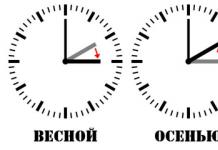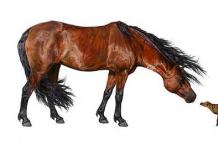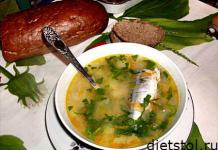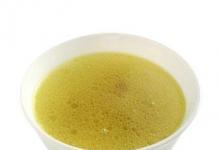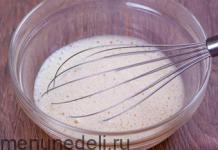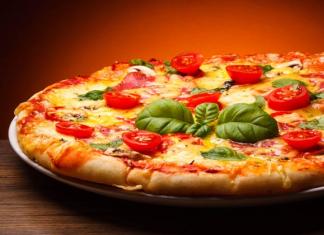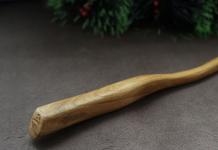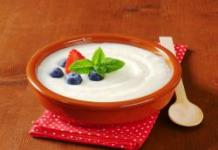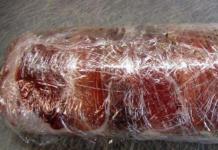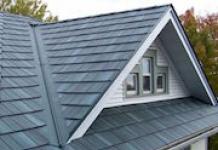The popular technique of decoupage is a surprisingly elegant, but at the same time absolutely uncomplicated creative direction. Its essence comes down to decorating furniture, household items and wardrobes with all kinds of colorful applications. Images cut from napkins, newspapers and other paper sources are fixed using several layers of varnish, thereby creating the effect of complete and seamless fusion with the surface.
Many novice needleworkers who set out to master decoupage techniques are interested in the question of what objects can be applied to. Absolutely any questions are answered by professionals. The most inconspicuous thing can be transformed beyond recognition. All the things that can be found in the attic of a grandmother’s house or in a chest in her bedroom - boxes, bracelets, flowerpots, photo frames, dishes, candles - can become a unique work of art if they are skillfully given a second life. You don’t need much for this, just patience and imagination.
Decoupage is an incredibly exciting creative technique. It does not require the purchase of expensive materials or any professional skills. As you master this amazing decorative trend, you will learn how to turn boring, everyday things into unique masterpieces - intricate, spectacular and inimitable!
This lesson presents decoupage master classes for beginners using napkins with step-by-step photographs.
To date, decoupage masters have mastered many amazing techniques - this is artificial aging, and the application of 3D images, and gilding, and craquelure coating, and other man-made miracles. Creative people clearly have a lot of ingenuity!
Decided to get creative and liven up your kitchen space? First, let's decorate the transparent containers used in the cooking process with designs cut out from paper napkins, using the decoupage technique. Indeed, this is perhaps the easiest way to revive boring dishes, giving them a slightly different look. And if you glue the drawings very carefully and cover the top with several layers of varnish, then you can use such dishes for quite a long time without fear of getting wet with water.

Materials for work:
- alcohol (formic, salicylic, boric acid, you can use vodka);
- 1-2 cotton pads;
- soft brush for painting;
- white acrylic paint (can be pink, yellow, gray, preferably pale shades);
- stationery scissors;
- paper napkins with a pattern;
- PVA glue (homemade paste made from flour and water is also suitable);
- acrylic varnish (ours is matte);
- small bowl for glue;
- glass containers intended for decoration.

So, decoupage glassware. Operating procedure:
We wipe the outside of well-washed containers with alcohol using cotton pads, that is, we degrease the glass surface.

Apply a layer of acrylic paint with a brush, dry it, then cover it with a second layer, trying not to allow any gaps. Leave until the paint is completely dry.


We cut out the fragments of the pattern we need from paper napkins (you can also use the tearing method without using scissors), separate the extra layers of napkins - we don’t need them.

We apply the selected design to the painted surface of the glass container and, using a brush dipped in glue, smooth the paper napkin with smooth movements, trying not to leave wrinkles or bubbles.
Although, even if folds and wrinkles remain (and it is very difficult to stick a napkin on an uneven surface without them), you will get something like an antique effect, which also looks quite interesting.


In this way we decorate each container on all sides.

When the pasted napkins are dry, use a blade to carefully cut off the excess paper, then cover with a double layer of varnish and leave the dishes alone until completely dry.


So, our glass containers, having slightly changed their “image”, are ready for use again. This makes them look much more fun. Is not it? We also recommend watching master classes on.


Decoupage for beginners - creating a pincushion from scrap materials
Even a first-grader can master this master class on making and decorating a needle bed; the main thing is to take your time and be careful.

For work we will need:
- a reel of tape;
- a piece of thick cardboard (for the bottom);
- PVA glue;
- acrylic primer;
- white acrylic paint (enamel);
- acrylic lacquer;
- napkin for decoupage.

We place the blank on the cardboard, trace the outline with a pencil, and cut it out. Thus, we get the bottom for the future pincushion. We clean the inside of the reel from advertising paper. To do this, use a needle or knife to pry up the top paper layer and carefully remove it.

Next, you need to prime the workpieces. To do this, you can use a specialized primer for decoupage, but the one used for construction work is also suitable. The primer will close all the pores on the surface, allowing the paint to lie flat in the future, without bubbles.

After the soil has dried, paint the workpieces. Acrylic enamel can also be used for construction purposes; it does not smell and dries quickly. It is better for a beginning needlewoman to use white paint, since it will be easier to do decoupage on a surface of this shade. In this case, the contours of the napkin will not be visible, but the design will remain clear.

After the paint has dried, we connect both pieces. We apply PVA glue along the contour of the bottom, install and fix the bobbin on it, and press it with a heavy object for a while.

Now let's move on to the decoupage technique. To do this, take a napkin and tear off pieces from it that we want to place on the surface of the future needle bed. Since the napkin is three-layer, we remove the two bottom layers, we only need the top one.

We place the first piece of applique on the surface and coat it with PVA glue, moving from the center to the edges. The adhesive must be diluted with water in a ratio of 1 to 1. Thus, we glue piece by piece until we decorate the entire surface of the bobbin. Leave the workpiece until completely dry.

Then you need to carefully sand the edges with fine sandpaper (nulka) and decorate them by “smacking” them with a piece of sponge.


Carefully paint over the upper edges with a brush.

At the last stage we varnish the needle bed. Acrylic varnish will add shine to the product. In addition, it will make the surface wear-resistant. You can apply the composition with a brush, but it is more convenient to do this with an aerosol.


All that remains is to fill the inner cavity of the needle bed with foam rubber, decorated with cotton fabric on top.

Our decoupage pincushion is ready! Read about it here.

Decoupage on a wooden clothespin - interesting home decor
Wooden clothespins are becoming a thing of the past; they are being replaced by plastic analogues. And in vain. Using small wooden products you can make many interesting decorative items for your home. We suggest making decoupage on the surface of a wooden clothespin using rice paper.
A decoupage card made from rice fibers lays flatter than a napkin and requires less effort to straighten. However, you should be careful with the fibers. However, when decorating clothespins, it is better to cut out motifs or parts of them from paper rather than tear them out.
With some skill, the work will take no more than an hour. These clothespins can be used for decorating gifts, for attaching photographs to a rope, etc.

Prepare PVA glue, small brushes, a primer for decoupage, the clothespins themselves, and leftover rice paper from another project.

Wooden clothespins, as a rule, do not need sanding, since they have a smooth surface, but among them there are defective ones with uneven edges. Such parts need to be sanded.
Next, cover the surfaces where the drawing will be located with a thin, barely noticeable layer of primer. To do this, it is convenient to use ordinary cardboard with a smooth edge instead of a spatula. Plastic or playing cards will do. It dries in a couple of minutes.

Now let’s choose a motif: a piece of paper that will be placed on a clothespin. You can arrange the motif so that several clothespins in a row are united by a common pattern, so as to create the impression that this is a complete thing of three parts, like a wall panel (mosaic).

This is what this paper looks like from the inside out.


Apply a thin layer of glue to both surfaces (note that the fastener is located between the surfaces; the glue should not get on it). Apply rice paper and iron thoroughly with a wide brush. Be careful not to damage the motif. The paper should be thoroughly saturated with PVA glue.

Trim off all excess on all sides, make a cut in the middle in the place where the fastener is located. Decorate a few more clothespins in the same way. Don't forget to let the clothespins dry thoroughly.


Decoupage for beginners on a wooden clothespin

DIY home decor using decoupage technique is ready! Read about another type of needlework here.
Master class on making a decorative bottle using decoupage technique with the addition of mosaics
A huge number of handicraft techniques makes it possible to realize the limitless fantasies and desires of masters. When seemingly banal things become a piece of art. Try turning an ordinary Coca-Cola bottle into a spectacular interior design detail or an exclusive gift.

Materials for work:
- glass bottle from Coca-Cola;
- white and blue acrylic paint;
- decoupage napkin;
- scissors, tweezers;
- PVA glue, Moment transparent glue;
- dry eggshells;
- regular and fan brush;
- Silver nail polish with a thin brush;
- acrylic varnish for applied arts, glossy and matte.
Clear the bottle of paper and paint the entire surface with white acrylic interior paint, let it dry well.

Separate the top layer with the ornament from the three-layer decoupage napkin.

Cut a strip with a pattern 5 cm wide from a napkin. Cut it into two parts 17 cm long.

After the paint has dried, begin decoupage. Attach one of the prepared strips to the bottom of the bottle. Holding it with your fingers, apply a little PVA glue to the beginning of the strip.


Using a fan brush, cover the napkin with a layer of glue, slightly stretching it. Be careful not to tear it. Add glue as you move around the circumference. Stepping back 2 cm, in the middle of the bottle, glue the second strip with the ornament in the same way. Let the glue dry.

The bottle will also be decorated with an eggshell mosaic. With this, you can hide some possible decoupage defects and give the product a stylish and finished look with a touch of antiquity.Clean the inside of the shell from the film so that it can easily be separated into parts when gluing.

Make a mosaic in any form. Apply Moment glue partially to an area of 2x2 cm.Place small pieces of shell on glue and press down with tweezers. Move the shells that have cracked into particles some distance apart.

Using a cotton swab or sponge, apply blue paint to the eggshell. Try to paint only the shell.

Use silver varnish and a thin brush to paint all the lines between the shell and along the edge line of the mosaic. Make an accent with the same varnish along the neck of the bottle. Let it dry.



Using a fan brush, apply the first layer of matte acrylic varnish to the part of the bottle other than the mosaic.

After the first one has dried, apply a second layer of glossy varnish to the entire bottle, including the mosaic. Let dry thoroughly.

The decorative bottle is ready. It looks great as a separate element of decor in any room. You can vary color schemes depending on the overall interior scheme.


It can serve as a vase for one flower or incense sticks.


Decoupage is a very interesting technique that allows you to transfer a design from paper, fabric, napkin to the surface of various objects, giving them a unique sophistication. This way you can create real masterpieces without resorting to drawing. With the help of such a simple technique, you can create completely new beautiful and useful objects from unnecessary improvised materials, and from this master class you will learn how to make hot coasters from the most ordinary CDs.

For this you will need:
- Several disks.
- Universal acrylic primer.
- Napkins.
- PVA glue.
- Universal acrylic varnish.
- Brushes or sponges for varnish and glue.


First you need to prepare the surface for decoupage. To do this, apply acrylic primer in 2 layers to a previously degreased surface and dry for several hours.
Napkins also need to be prepared. In this case, ordinary three-layer table napkins with a large floral pattern are used. To work, you only need to leave the top layer.

PVA glue is applied to the dried, primed disc.

A napkin is placed on top.

The napkin gets wet from the glue and changes its structure, forming wrinkles and bubbles. They need to be smoothed out carefully. This can be done with a damp brush or finger.

For beginners, it is better to smooth out wrinkles with your finger. This will help you feel the right amount of pressure so as not to tear the fragile napkin. Having filled your hand, you can use a soft brush. As a result, the image should be evenly distributed on the surface.

Now you need to remove excess and dry the surface.

You need to fix the result with acrylic varnish. It can be applied using a brush or sponge.


You can decorate the finished coasters at your discretion. Using regular acrylic paint, you can add contours to the flowers or the stands themselves, add flowers and leaves, or leave them as is.

These are the coasters we made using the decoupage technique.

Master class for beginners - cutting board decoupage
Materials for decoupage - what to stock up on
The need for certain auxiliary means and tools is dictated by the specific goal of the master, or rather, the subject with which he is dealing. Beginning creators are not recommended to immediately move on to valuable exhibits, to comprehend the basics of decoupage and to hone basic skills better on the simplest objects - cardboard boxes or wooden plates (if necessary, blanks can be easily found in handicraft stores).
The surface must be as flat, smooth and clean as possible, otherwise disappointments can hardly be avoided - the appearance of the finished product will be spoiled by an unaesthetic relief. In the future, it will be possible to use items that have already been used (for example, an old kitchen board); it is only important to scrupulously clean off the remnants of the past decor.
So, what materials should you stock up on for the decoupage technique:
- Sandpaper- primarily needed for sanding wood, but even if you have an absolutely smooth workpiece at your disposal, it will be useful for further grouting of the primer base. When starting to sand, remember that the slightest roughness or unevenness can have a detrimental effect on the quality of the future product - fine-grained sandpaper will always have a job!
- Special brushes— they are divided into two types for spreading soil and for sizing paper. The size of brushes belonging to the first category is selected in accordance with the size of the surface, the main condition being a flat shape and sufficient width. Today you can easily find special brushes made of foam rubber, which look very similar to ordinary ones, with a wooden handle - the only difference is that a flat foam roller with a cut edge is offered to replace the bristles. Such a tool is very economical because it does not tend to absorb a lot of liquid.
As for glue brushes, they should be quite soft so as not to damage the fragile paper. It is best to get a wide fan-shaped brush - it is equipped with long, silky bristles, applies glue extremely delicately, and is also easy to clean. By the way, the same brush is ideal for distributing varnish. - Scissors will be needed to carefully cut out transferable images. The dimensions of the tool are not decisive; the main thing is your personal convenience.
- Alcohol-containing composition Designed for degreasing the working surface. Absolutely any product will do - cologne, perfume, colorless pharmacy tincture or even facial tonic. Pure alcohol is also not forbidden - it will ensure the most reliable adhesion of the picture to the base.
- Priming is a primary coating that prepares the surface for direct contact with the image. At first, it is permissible to use an ordinary acrylic base for wood. The priority color is white.
- Glue— during the learning process, regular PVA can be used for work; it serves to fix the picture. More advanced craftsmen prefer to buy special glue for decoupage - less thick in consistency. However, PVA can also be safely diluted by combining it with water in a ratio of 21.
- Picture- the most important element of decoupage creativity. At first, as a rule, colorful napkins are used, but there are also a lot of special thematic cards - individual or grouped into sets. Experienced craftsmen often incorporate rice paper, which varies in shades and types, into their creativity. When handling a napkin, it is necessary to separate only the topmost, painted layer - it is this layer that is assigned the role of decorating the object.
- Varnish- material on which increased responsibility is assigned. A good coating cares not only about the appearance of the product, but also about its service life, so the practicality of decorated items depends on this factor. Decorators are not used to skimping on varnishing - the more layers, the better the result. When working at home, it makes sense to use less toxic varnishes - for example, acrylic or special decoupage, and outside your home you can safely use construction (for wood processing) and even yacht varnishes.
The simplest master class for beginners - plate decoupage
Decoupage - what is it and how did it appear?
The earliest evidence of the origin of decoupage dates back to the distant 1st century AD; in those days, special ritual drawings were transferred to the walls of the tombs of Siberian nomads. Centuries later, the inhabitants of the Middle Kingdom became keenly interested in such technology. Since the 12th century, a fashion has reigned in China for various interior items made in exactly this decorative style. Creative fantasies were reflected in the openwork patterns that were used to decorate the windows and walls of homes everywhere; initially, the thinnest rice paper was used to make them.
As for the European history of the existence of decoupage, it begins with Germany at the end of the 15th century, where the tendency to ennoble boring classic furniture with bright pictures spread. The technology reached its peak of popularity two centuries later, having established new trade relations, Europe hospitably welcomed Eastern gifts, so souvenirs and other Asian interior items began to firmly establish themselves in its vast expanses. Outlandish chests of drawers, cabinets, caskets and screens simply could not go unnoticed by this moment, with plot images they learned to skillfully decorate wood, stone and even metal. Only aristocratic people could afford such luxury, which is why the value of decoupage only increased.
Enterprising Venetian artisans began to adopt expensive art from Eastern masters. The result of their work was paper and textile compositions for decorating furniture; the cost of these applications was no longer so fabulous, and their quality was practically not inferior to the original masterpieces. In order to carefully hide the joints and seams, European craftsmen got the hang of generously covering their products with varnish, the number of layers of which sometimes exceeded 30 or even 40. The relatively low, actually publicly available, price of the creations gave rise to calling decoupage an art for the poor - since then this characteristic has been very firmly attached to creativity .
In France, the love for decorating reached unimaginable limits, even the highest ruling persons were fond of it. For example, it is known that Marie Antoinette had an incredible passion for decoupage, having enlisted the support of the ladies of the court, she used in her work not only copies, but also originals of paintings by famous artists. Interest did not subside in England either - local nobles loved to collect richly decorated boxes and boxes.
At first, the drawings were not too complex; cherubs, simple landscapes and various primitive figures adorned the walls and surfaces of objects. However, later, with the advent of the magnificent Victorian era, they were quickly replaced by much more picturesque motifs. Every wealthy family considered it their duty to acquire luxurious panels with views of city streets or objects of architectural art. Such decor was intended specifically for decorating indoor walls, so the dimensions of the products became quite large.
In the 20th century, the fashion trend did not even think of slowing down. Thanks to the French, the name decoupage was officially assigned to creativity; the word decoupage comes from the verb decouper - to cut, which very eloquently explains the essence of this direction. The famous Pablo Picasso and Henri Matisse provided important support to the decorators - the famous artists expressed their sincere admiration by creating a number of masterpieces using the decoupage technique.
Decoupage remains the most accessible type of needlework, but no less creatively interesting. Professionals define decoupage as an imitation of artistic painting on any surface. The more inconspicuous the application is, the more elegant the item will look. In order to apply an applique to an item, decoupage cards are used. But they are quite expensive.
Therefore, handicraftsmen found an alternative to them - three-layer napkins. They allow you to bring the applique closer to natural painting. In other words, a drawing made using this method is almost impossible to distinguish from a real, live painting. Experienced craftsmen say that with a certain skill, you can use ordinary napkins. It is for this reason that decoupage is called the “napkin technique”.
Decoupage is a fun activity that gives you the opportunity to revive old things. Using various technologies, it is possible to produce unique items: bottles, furniture, etc. They will be a wonderful decoration for your home, suitable for gifts and even for sale. To master this technique, no special skills are required. You can learn decoupage for beginners step by step from photos in master classes, and also watch decoupage lessons on video.
What is decoupage?
Decoupage is a technique for decorating various objects by gluing to them various images that are previously cut out of paper. Things made with your own hands have special value. The human soul is embedded in them.
For beginners, it will be easier to master the decoupage technique if you first familiarize yourself with step-by-step photos and videos, and also adhere to the following recommendations:
- You can glue a pattern to a surface (a bottle or furniture) in different ways, but it is advisable to smooth it, starting from the center and gradually moving to the edges.
- To glue the picture, it is advisable to use PVA glue.
- An activity like decoupage requires patience - for example, using a hairdryer to dry furniture faster can only cause harm.
- Acrylic paint will help make the drawing more beautiful and natural, so do not neglect it.
- It is advisable to apply two layers of varnish, but you must wait until the first one dries.
- Acrylic varnish is best suited for creating products using the decoupage technique, since it has no odor and does not cause allergic reactions upon contact with human skin.
- Before gluing the paper with a pattern, you need to clean the surface from dirt using a damp cloth or alcohol solution.

On a note! The good news for beginners is that varnishes and acrylic paints can be washed off within the first 24 hours with plain water. This means that it is possible to correct shortcomings in the work.
Required tools and materials
To make an exclusive item using the decoupage technique with your own hands, you will need a certain set of materials and tools. First of all, you need to prepare the item itself for decoration using the decoupage technique. It could be a bottle, plate, furniture or something else. For decoupage, glass, plastic, ceramic or any other working surface is allowed. True, experts recommend that beginners train on a tree.
In addition to the decoupage object itself, you will need the following materials and tools:
- Special napkins with different designs.
- Special cards used for decoupage - with them the products are of better quality, but it is easier to work with napkins.
- Small scissors - preferably they have rounded ends (this makes it easier to cut out a design from a napkin);
- A flat brush 1-2 cm wide - with a tool of this size, paint and varnish are applied better.
- PVA glue or a special composition for decoupage to fix the napkin.
- Varnish - you can use glossy, matte, acrylic and others.
- Sandpaper - helps prepare the surface for work.
- A primer for leveling the surface, which will help reduce paint consumption.

Armed with these tools and materials, as well as step-by-step instructions, you can begin creating exclusive products using the decoupage technique.
Basic Techniques
To fix a pattern on the surface of the object being decorated, you can use various methods:
- Standard decoupage involves cutting out a design from paper and gluing it to a surface, followed by varnishing after drying.
- Reverse decoupling - a transparent base is used, the design is glued to the glass surface with the front side, and after drying, varnish is applied.
- Artistic composition - several drawings are combined into a single whole, you can add shadows, painting and accents.
- Decopatch - this type of decoupage requires the use of newspapers, magazines, and fabric drawings, which completely fill the working surface.
- Volumetric decoupage - first the drawing is glued to the surface, and then painting is done on it.
On a note! Beginners should start with simpler decoupage from napkins, and only after gaining experience move on to complex techniques.
Master classes on decoupage step by step with photos
Master classes will help you decorate objects using the decoupage technique. Step-by-step instructions with photos will simplify the task even for novice craftsmen.
Master class 1: furniture decoupage
To decorate furniture, you should prepare napkins with designs, paints, varnish, PVA glue, bitumen and tape. For beginners, it will be more convenient to work with a large surface, so it is advisable to choose a chest of drawers or something similar. If you want to create vintage furniture, you should not skimp on craquelure varnish, since it will help you achieve the desired effect.

A master class on decorating furniture step by step with photos is presented below.

Master class 2: glass decoupage
Glass products are suitable for decoupage. Bottles and other utensils are often used for this purpose. In this master class, you will do ducoupage of a glass jar. It is worth noting that a bottle of champagne is often decorated in a similar way for a New Year's gift.

To do this, you need to prepare an alcohol-based napkin, white acrylic paint, varnish, a stationery clip, a sponge, napkins with drawings, PVA glue, a toothpick, brushes, a toothbrush, coffee beans, burnt umber, bitumen varnish and twine.

Decoupage is a technique that allows you to transfer finished images to various surfaces. Most often, decoupage is done on wooden household items or decor. But options for decorating candles, ceramic dishes and fabrics using this technique are also common. This method of decoration, compared to others, is the least simple to implement and will not require large expenses. Among other things, decoupage takes much less time and effort than, for example, artistic painting on wood. We invite you to find out how to do decoupage using step-by-step photos.
Features of the decoupage technique
Decoupage is a kind of applique, so it is quite simple to do. The desired picture, applied to paper, is glued to the surface and covered with varnish. Only thin paper products are suitable for this technique. Among them there are three types:

Photo of decoupage bottle
- Ordinary paper napkins with a pattern;
- Pictures printed on very thin paper using a regular home printer;
- Special paper for decoupage. It can be purchased at art and hobby stores.

Photo of decoupage box
Items needed to get started:
- Picture. Ordinary napkins are suitable for training. Special paper for decoupage, as a rule, is quite expensive, so you shouldn’t spend it on your very first practice decor.


- Varnish for coating. You can choose a varnish with a matte or glossy effect.

Photo of the varnishing stage
- Brush. A small flat brush made from synthetic fibers works best. If the work is large, then a larger brush will be useful.

Photos of decoration


Photo of priming the board

Photo of applying the napkin
Making decoupage step by step
Step 1. First of all, the style of future work is determined. A decorative object and drawings for it are selected.
Step 2. Surface preparation. If necessary, the wood is sanded, primed or coated with acrylic paint.

Preparing the frame for decoupage. Photo
Step 3. Cutting out the images. Everything here is extremely simple - you need to cut out pictures from the top layer of napkins along the desired contour. To ensure a smooth transition of napkins into a wooden surface, they are sometimes torn rather than cut. This creates a thin, jagged edge that will blend seamlessly into the background.

Photo of surface priming
Step 4. Now you need to decide on the approximate position of the drawings on the object. You can simply apply napkins to the finished surface and evaluate how the design will look on the finished product. When the placement plan is ready, you can proceed to the next step.

Photo of white paint coating
Step 5. Gluing the image. Decoupage differs from conventional appliqués in that the glue is applied not to the back of the image, but to the front of the image. First you need to attach the picture to its placement location. Then, glue is applied on top of it with a brush. It is best to start from the center of the drawing. A napkin soaked in glue may begin to stretch and tear, so you need to be very careful at the gluing stage. This step is repeated with all drawings for the item. After this, you need to give the product time to dry.

Photo of brushes for decoupage
Step 6. When the glue has dried, you can add any drawings with a brush and paints to the pictures. Acrylic paint and a thin nylon brush are best suited for these purposes.

Decoupage glass jar

At first glance, it may seem that this technique is difficult to perform, but this is not at all the case. With the proper level of training and the availability of all the necessary materials, anyone can handle decoupage. Knowing what is decoupage and how to do it. They will help you quickly master the technique, and step-by-step photos will allow you to imagine what products can be made.

The article will tell you in detail and show you how to create incredibly beautiful crafts for home decor using the popular decoupage technique.
Decoupage is a modern trend in creativity and handicrafts, which involves the use of fabrics and paper to create beautiful decorations for everyday things: furniture, boxes, dishes, boxes and much more.
Decoupage can be flat and voluminous, artistic and in the spirit of minimalism. This creativity is within the capabilities of an experienced needlewoman and a complete beginner. If you have the opportunity, carefully study the instructions for work in this article and watch the video master classes.
What is required for work:
- Special decoupage base– thin paper with a selected design or pattern.
- Glue– special for decoupage or regular PVA
- Stationery knife
- Sharp scissors, may also require manicuring for smaller cuts.
- Ruler
- Simple pencil and eraser
- Fine sandpaper (paper)
How to get started:
- First, you should decide what surface you will decorate: tin cans, wooden boxes, corton boxes or glass bottles.
- The selected surface should be prepared: washed and dried thoroughly.
- If you have chosen wooden material for work, then you should first prepare it by rubbing it with sandpaper.
- If the selected wooden material has cracks, they should be covered with putty.
- It’s easy to prepare the material for applying decoupage: you can leave it in its original form or open it with acrylic paint.
- Before starting work without applying glue, you should place cut-out patterns from special paper on the surface to determine the design.
- Apply the glue to the selected surface in an even layer, and also apply the glue to the paper.
- Glue each drawing very carefully, straightening even the smallest folds so that the work is beautiful.
- After the glue has dried, the design should be opened with varnish.
- The varnish is applied with a brush or sponge in two layers, after the first has dried.
Video: “Master class on decoupage for beginners”
How to make decoupage from napkins for beginners step by step with photos: technique, master class
A napkin with a pattern is an ideal material for decoupage. In stores you can find a large selection of designs on napkins of different themes, which makes it possible to create crafts of extraordinary beauty in the chosen style.
Step by step:
Simple decoupage of a flower pot using a napkin

Decoupage soap with napkin
Decoupage hangers using napkins
Decoupage of champagne bottles: photos of works and ideas
Decoupage of bottles is the most popular, since it is not difficult to find an empty bottle, and the finished work looks very beautiful and is easy to decorate the house with. Also, modern manufacturers of alcoholic and non-alcoholic drinks allow you to choose a glass bottle of any shape.

Decorated wine bottles
Work step by step:
- Wash the bottle thoroughly from the inside and outside and dry.
- If you are gluing a bright image, you should open the glass with white acrylic paint (or any other color). Acrylic paint is resistant to moisture and varnish and retains its brightness.
- Carefully cut out patterns and pictures from napkins
- Open the bottle with glue and the pictures on the back side
- Glue, carefully smoothing the paper, avoiding wrinkles.
- Wait until it dries and open the bottle with varnish, dry it and apply another layer of varnish.
- Decorate the dried bottle with lace, whip, canvas or other decorative elements to your taste.
Video: “Decoupage bottles: master class”
Decoupage glass vase: photos of works and ideas
An old flower vase can be very successfully transformed using a technique such as decoupage. So you can create a country-style vase for a country house or to support the overall style of the room. A large selection of creative paper will help you accurately determine the ideal image for the vase.

Decoupage a vase using special paper

Decoupage and craquelure on a vase
IMPORTANT: The vase should be opened with acrylic paints or stained glass paints. They are moisture resistant and will not leak when in contact with water. After applying the design, open the product with varnish twice or three times.
Video: “Decoupage of a plastic bottle under a vase”
Decoupage boxes: photos of works and ideas for creativity
Every woman has a box. In it she keeps her secrets, cosmetics, jewelry or important papers. You can transform your plastic or wooden box very simply using decoupage.
Beautiful boxes:

Wooden box with decoupage decoration and lace

Stylish box made using decoupage technique with your own hands
Homemade decoupage of a wooden box
Video: “Decoupage boxes: master class”
Decoupage Easter eggs: photos of works and ideas
Using decoupage, you can also decorate Easter eggs for the holiday to make them incredibly beautiful and impressive. If you are decorating decorative eggs (carved from wood or foam blanks), they can be opened with varnish.
IMPORTANT: If you intend to decorate edible eggs, you can open them with a layer of PVA glue, which will be removed along with the eggshell during cleaning.
Photos of works:

Decorative Easter eggs

Beautiful Easter decor using decoupage

Volumetric decoupage of Easter egg
Video: “Decoupage eggs: master class”
Decoupage cans: photos of finished crafts, ideas for creativity
Decoupage can decorate your kitchen utensils and jars intended for storing cereals and other bulk products: sugar, salt, soda, cocoa, coffee, tea, and so on. Banks can be covered with a pattern over the entire area, or only some patterns and inscriptions can be glued.
Photos of works:

Stylish decoupage of tin cans

Beautiful decoupage of jars for the kitchen, decoration with lace

Decoupage of ceramic jars for the kitchen
Video: “Decorating plastic and glass jars for the kitchen”
Decoupage of plates: photos of finished crafts, ideas for creativity
A plate decorated with decoupage is necessary only for decorative purposes and to transform the room: kitchen, living room, even bedroom. You can choose any pattern and make it carefully, since the surface is smooth and comfortable. The resulting product is placed on shelves, walls or special stands.
Photos of plates:

Decor of plates for the kitchen

Decor of plates in medieval style
Stylish multi-layer decoupage plates
Video: “Decoupage plates: master class”
Decoupage cardboard boxes: how to decorate a box?
A box decorated with decoupage can be an excellent package not only for storing personal items, but also for gift wrapping. Decorating a box with decoupage is very easy, the paper lies flat and neat, the box has a comfortable, flat surface.
Photos of boxes:
Stylish decoupage box

Decoupage boxes in the spirit of minimalism
Video: “Decoupage boxes: master class”
Decoupage of tea houses: photos of finished crafts, ideas
A tea house is a special box in the form of a symbolic hut with a roof, which is intended for storing tea bags. It's convenient and beautiful. A tea house is a good gift and souvenir for loved ones.
Decorating cutting boards with decoupage is necessary only for decorative purposes. Such crafts should be hung on the wall or placed on shelves in the kitchen. As a rule, they are decorated with pictures of food, fruits, vegetables, flowers and cooked food.
Photos of works:
Beautiful cutting boards using decoupage technique
Original decoupage boards

Boards for room decoration
Video: “Decoupage a cutting board according to all the rules: a detailed master class”
Decoupage attracts with its relative simplicity and variety of effects. From a variety of technologies, you can always choose the one that is closest to you.
The creative ideas and searches of craftswomen do not stand still; every year new decoupage techniques appear, which you want to quickly learn and try, and easily bring to life your most daring undertakings. So that nothing interferes with the flight of creative imagination, it is necessary to study the theory of the main directions and methods of work and get a little practice. Today, there are six types of decoupage: direct, reverse, artistic (smoky), volumetric (3D), decopatch.
Direct decoupage - classic method
Direct decoupage is the basic and, perhaps, the most basic and main way of decorating objects. It will help beginners learn how to glue and process images correctly and efficiently, understand and comprehend all the nuances and subtleties of the work, so that later they can easily master other decorating techniques.
Main nuances

The essence of the direct decoupage technique is to glue or implant an image onto a previously prepared surface. Almost any work surface is suitable. It can be wood, chipboard and MDF blanks, plywood, plastic, glass, fabric, leather, thick cardboard. The main thing is to properly prepare the surface.
Before starting work, wood must be sanded and primed, glass, plastic and leather products (document covers, notebooks, bags) must be degreased with alcohol, fabric must be washed and ironed. Any image is suitable for decoration - a motif of a beautiful napkin, a decoupage card or a printout of a picture made on a laser printer or photo paper.

The napkin must be layered and the top layer should be left; the decoupage card (or its fragment) should be soaked for a short time in lukewarm water. When working with printouts, there are several ways to prepare an image for gluing:
- thin it out using stationery tape and delicate sandpaper;
- implant the image into the surface by gluing the motif with the front side to the surface, followed by removing the top layers of paper using water;
- cover the picture with several layers of transfer varnish, dry well, wet with water and carefully remove the white layer of paper, leaving a thin, transparent layer of the picture protected by varnish;
- transfer the image onto the surface using acetone or a creamy cleanser and a regular spoon.
Take a look at our cutting board decoupage master class to learn the technique in detail with a printout (link at the bottom of the article).

Each method has its own subtleties and nuances; after trying and studying each of them, you can choose the one you like best.
Features of decorating with napkins
The napkin decoupage technique is ideal for beginners. There are several methods of gluing (implantation).
Gluing the napkin motif using decoupage glue or PVA glue, diluted with water in a ratio of 1:1. Place the motif on the surface and, using a flat brush, begin gluing the napkin, applying glue from the center to the edges. Gently smooth out the motif, straighten out wrinkles and air bubbles. Do not press too hard to avoid damaging the napkin.
Gluing using a file allows you to easily position the image neatly, with virtually no creases.
- Place the napkin motif (top layer) on the file with the design facing away from you. Using a spray bottle, thoroughly wet the napkin with water until it almost floats in it. Smooth out any bumps, wrinkles, or bubbles. Place another file on top and use a piece of sponge to smooth the napkin well, getting rid of excess water.
- Carefully remove the top file and attach the file with a napkin to the surface. Smooth the napkin again with a piece of sponge. Remove the file so that the napkin remains on the surface. Apply glue. Let dry.

This method is perfect for large fragments and for “capricious” napkins that can fall apart when trying to glue them with a brush and glue. Recommended for learning decoupage techniques for beginners.
"Hot" method ideal for gluing napkins to a flat, smooth surface (the lid of a wooden box, banknote holder, cutting board) that is not afraid of high temperatures. To work you will need PVA glue, baking paper, and an iron.
- Apply two layers of glue to the prepared surface, allowing each layer to dry thoroughly.
- Place the motif on the surface and place baking paper on top.
- Iron the surface with a hot iron.
- Remove the baking paper, let the workpiece cool, and fix the napkin with varnish.

Reverse decoupage and its subtleties
The reverse decoupage technique is used on glass (transparent) surfaces and differs from the direct method in the sequence of actions.
That is, first a napkin or printout is glued (facing away from you), additional decorative elements are created (contour painting), other artistic effects and the desired color are applied, and then the surface is primed, if necessary, the outer side is decorated with direct decoupage and varnished to protect it from abrasion .

The design appears under glass, which allows the dishes decorated using this technique to be used for their intended purpose. If you follow simple care rules, such dishes will last a long time and be pleasing to the eye.
The technique of this type of decoupage is discussed in detail in ours.

Artistic (smoky) decoupage for the patient
Many novice needlewomen are frightened by the need to use artistic decoupage in their work, armed with a brush and a palette of paints, especially if they have absolutely no experience in drawing. But it happens that a picture glued to a white surface simply screams that it is necessary to add color, shade transitions, shadows, shading, volume.
Even if the last time you painted with paints was while studying at school, you should not give up studying and mastering this type of decoupage technique, because with its help you will make your product truly exclusive and expensive in perception.

A little patience in the theoretical study of the basic techniques of artistic finishing, a lot (or maybe just a little) of training, and your work will shine with new facets. It is best to learn this technique with the help of video master classes, step-by-step photo master classes, under the guidance of a teacher in a live master class.

You can work with acrylic paints and a paint drying retardant (allows you to do soft shading, prevents the paint from drying too quickly, allows you to carefully work out the background, make smooth halftones, shadows and transitions), and with pastels.
It is important to remember that artistic refinement is best done in daylight and take into account that acrylic paints become slightly darker after drying. In the artistic form of decoupage, three methods can be distinguished.

Feathering(colored haze) is created using acrylic paints or (it must first be scraped with a blade). The essence of the method is to fit a motif with clear edges into the surrounding background by creating a transparent haze around the motif in the same color as the adjacent area of the design.
Features of working with pastels: it is better to use a matte varnish (pastel will not be applied to glossy varnish), and the working surface should be sanded as much as possible so that there are no grooves or bumps.
Finishing and drawing the background used to enhance the artistic effect and correct possible defects.
Using these techniques, you can make a faded drawing brighter, highlight key elements, draw small details, and fill in missing elements.

Shadows Give the drawing volume and artistic completeness.
It will be easier to master the skills of artistic painting using the decoupage decoration technique if you practice doing this on sheets of plain paper. Choose a bright drawing, fix it on a sheet of paper, and, having prepared on the palette the shades and colors present in the drawing, try to fill the white background with color so that the drawing and background become a harmonious whole. Learn how to create different shades, the laws of perspective and light and shade.
Decopatch – imitation of patchwork technique
This decoupage technique is somewhat reminiscent of, since the surface to be decorated is randomly filled with pieces of multi-colored paper, which can be torn by hand or cut with scissors.

To create works using this technique, you can use napkins, rice paper, old newspapers and sheet music, color pictures from glossy magazines, and special paper for decopatch, which can be purchased in craft stores.
This style of decoupage is suitable for beginners, as it is quite simple to perform and does not require special preparedness or experience. The sizes of the pieces of paper depend on the size of the work; they can be glued slightly overlapping, forming a free and fancy ornament.


Decopatch paper has a number of advantages compared to other materials. It is thin and elastic, does not stretch, does not form folds. The choice of colors is huge, the colors are bright and rich.
When using pictures from glossy magazines, you can create the effect of an old stone - to do this, you need to wipe the glued and well-dried fragments of the pictures with acetone - part of the paint layer will be washed off, giving the decorated surface the appearance of cracked marble.
Decopatch can be used both to create a background and as an independent decorative effect. Any objects can serve as materials for decoupage as blanks; papier-mâché figures look especially impressive, which can be decorated according to your taste and desire.

Before work, do not forget to prime the surface with artistic primer or white paint; protect the finished work with several layers of acrylic varnish.
Volumetric (3D) decoupage - modern technology
This relatively new decoupage technique will help highlight fragments of work, emphasizing them with volume.
To create volume you can use:
- modeling paste;
- wood putty;
- textile;
- artistic art gels;
- 3D decoupage cards;
- 3D modeling Sospeso Transparente.

Let's look at how to make decoupage with the listed materials.
How to work with modeling paste
From modeling paste You can sculpt three-dimensional elements of flowers, objects, the body of an animal or bird. You will need two identical motifs.
- Glue the first motif (let's say it will be an image of a rooster for a rustic-style product), dry it well.
- Use modeling paste to sculpt the body and tail feathers. Glue it to the picture and smooth it out well, soften the transitions (with a brush or a finger moistened with water). The modeling paste should not reach the border of the pattern by 1-2 mm.
- From the second motif, cut out the element that needs to be glued on top of the created volume.
- Combine the drawings and glue them carefully. Dry. If necessary, do a little painting.

Technique for working with putty
Putty You can also lay out individual volumetric parts or large elements, if this suits your idea.
- It is convenient to apply the putty with a palette knife.
- Do not try to make a thick layer at once, let its height be 2-3 mm, smooth out any unevenness with your fingers moistened with water.
- Without waiting for the putty to dry, immediately begin gluing the motif.
Using putty, you can create imitations of brickwork, tree trunks, and wooden boards. Almost anything that can decorate and highlight your creation.

Decor using fabric
Fabric in decoupage used as a decorative element to give the work additional volume and presence. For example, when working with an image of a woman, you can drape the model’s skirt (dress) with fabric. The image will become more realistic and it will seem that the heroine is about to leave the surface of a decorative panel, plate or other object.

You can also create the effects of the sea, old wood, curtains, and other draperies - depending on the task.
- The fabric must be well soaked with PVA glue.
- Place the fabric on the area to be decorated, give it the desired shape and volume.
- Dry well.
- Using acrylic paints, paint the element with the desired color, add additional effects - patina, sparkles, crystal paste.
- Protect with several layers of acrylic varnish.

Application of art gels
Artistic art gels will give the work the effect of oil painting.
- Use a brush to create voluminous strokes.
- After drying, the art gel becomes transparent, and the drawing takes on new facets.
Working with volumetric maps
3D decoupage cards You can buy it in stores, or you can create it yourself. To do this, it is enough to make a color printout of the selected picture in five or six copies.

The first copy is the main one; from the remaining copies you need to cut out fragments that will create volume. The cut out fragments are glued on top of each other layer by layer using silicone glue, achieving the desired volume. Volumetric decoupage gives the product a sculptural appearance, but it is important not to overdo it with volume so that the composition as a whole looks harmonious and is well perceived visually.
Sospeso Trasparente - the newest method of volumetric decoration
Italian decoupage technique Sospeso Trasparente the most expensive, but very effective and unusual. A specially developed and patented non-toxic thermoplastic is used for work.
- The selected fragment of the image is pasted onto thermoplastic and dried well.
- Next, you need to cut out the image and hold it with tongs and heat it over a candle for a few seconds.
- As the film warms up, it becomes elastic and pliable. At this moment, the image is simulated with special tools - bubbles.
- Place the piece to be processed on a latex mat and give it the desired volume and curves.
- Let it harden.

Decorative elements made using this technique look luxurious and realistic.
If you use a napkin (top layer) or a decoupage rice card as a base, an airy, translucent volume is created.
When working with thick decoupage cards or prints, a “porcelain” effect is created, since the thick paper does not transmit light.

Let this publication inspire you to study basic decoupage techniques and bold creative searches and create bright works. Take one of our master classes as a basis and don’t put off creativity until tomorrow!
Step-by-step master classes on decoupage using different techniques
Despite the differences, all decoupage techniques are simple and accessible to beginners. By following our master classes, you will quickly master this spectacular technique, dishes, boxes and other items for home and personal use.



